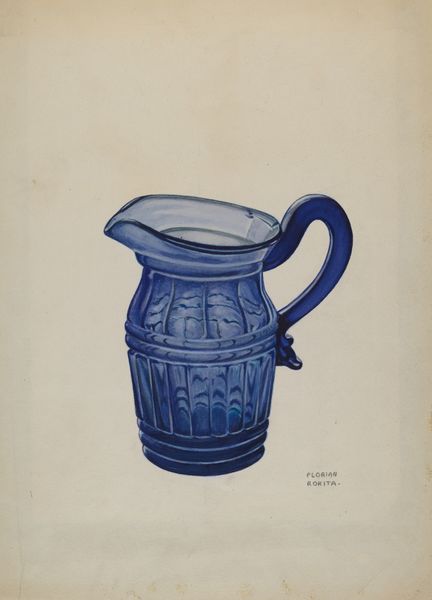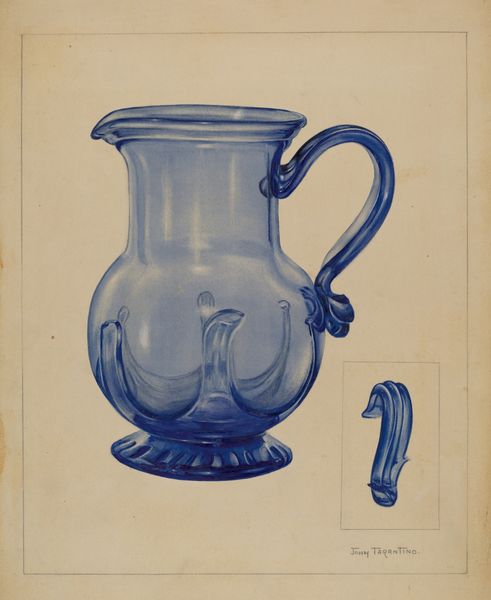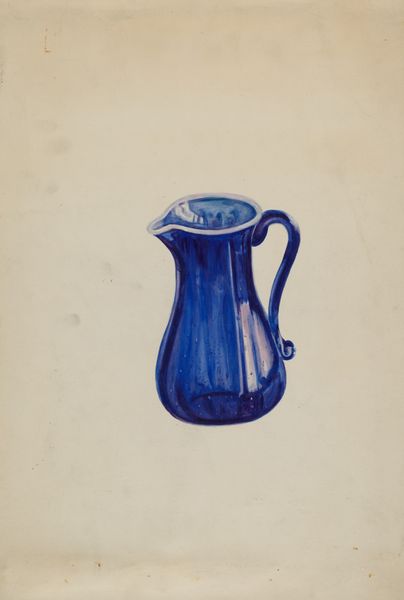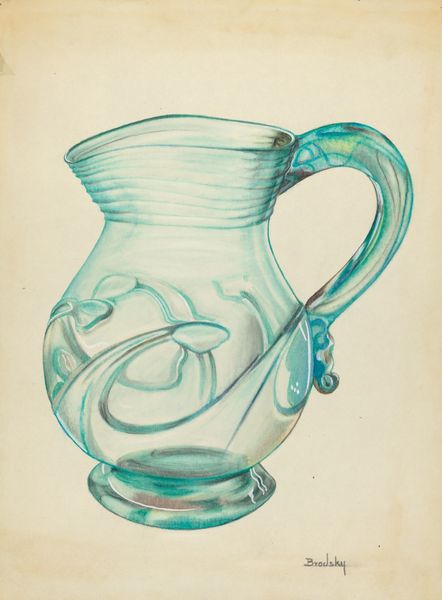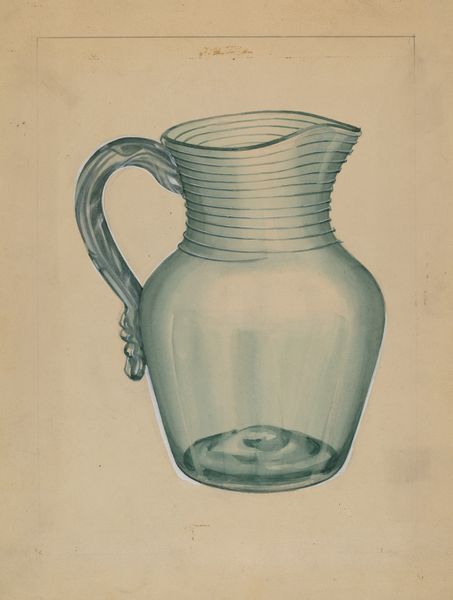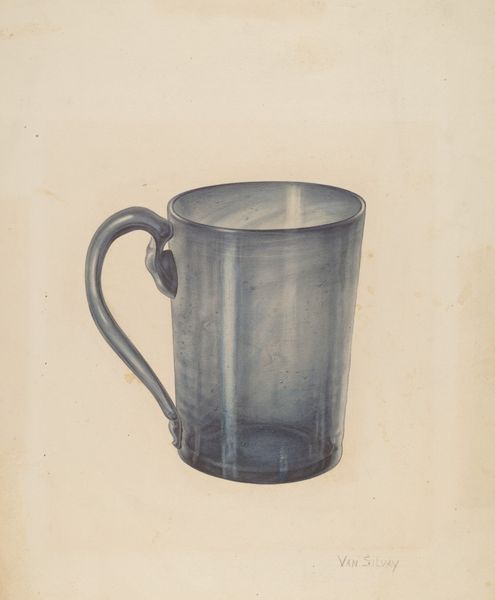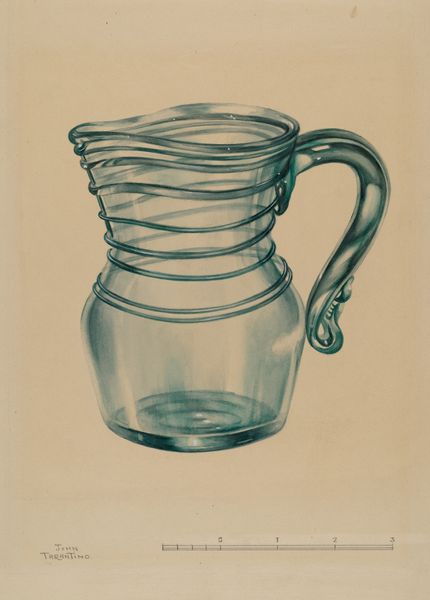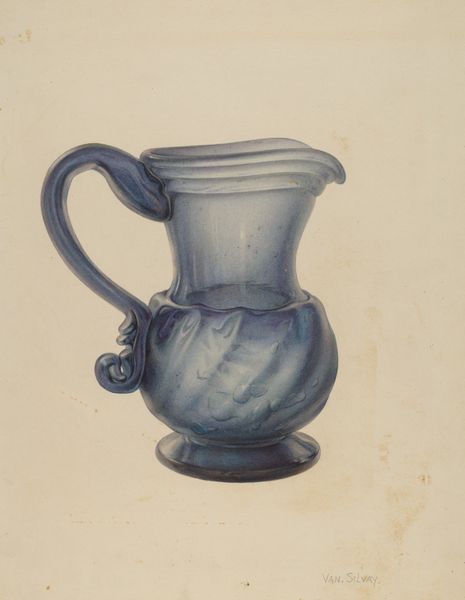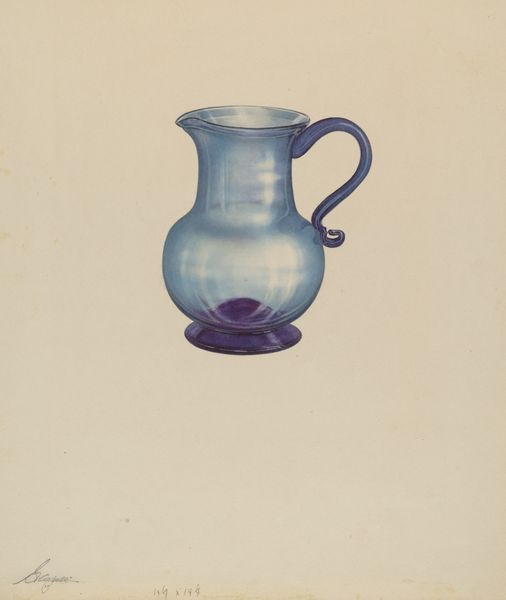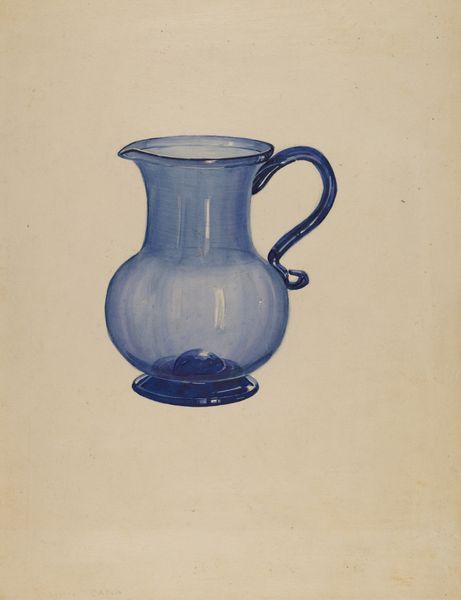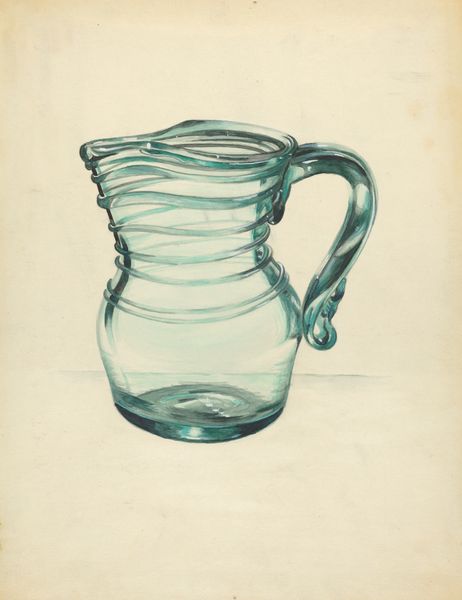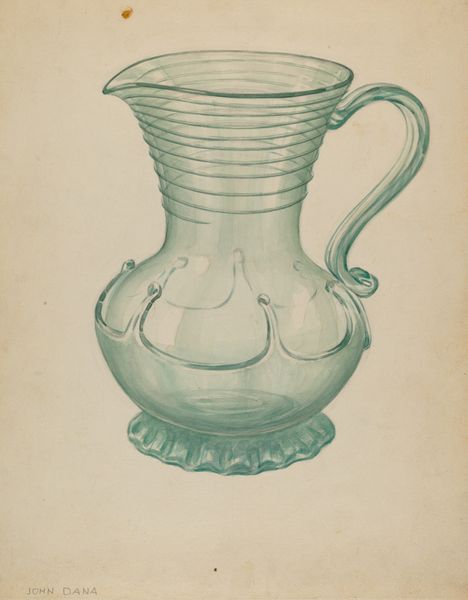
drawing, glass, watercolor
#
drawing
#
glass
#
watercolor
#
watercolour illustration
#
watercolor
#
realism
Dimensions: overall: 27.6 x 20.2 cm (10 7/8 x 7 15/16 in.)
Copyright: National Gallery of Art: CC0 1.0
Editor: This is Alvin Shiren's "Blown Glass - Pitcher," likely created between 1935 and 1942, rendered in watercolor and drawing. It’s a simple, almost classical depiction, but something about the singular blue and stark background feels... isolating. What’s your take? Curator: The image is interesting because it positions a mass-produced item—likely from industrial glass production—as a subject worthy of artistic attention. How do we interpret that choice during the Depression era? Editor: Do you mean, does it reflect some kind of social commentary, given the economic struggles? Curator: Possibly. Consider the WPA Federal Art Project, also active at that time. Did Shiren's image align with or diverge from that initiative's goals of celebrating American industry and its workers? Or was it pure artistic study of form and light? Editor: So, it could be about elevating the everyday, a democratizing move in art? The way a regular item like a water pitcher is the subject instead of a person or scene makes me wonder whether the artist wanted the viewer to think of everyone. Curator: Exactly! Or perhaps consider the intended audience. Was this watercolor for a design publication? Or was it meant to be displayed? The "public" interacts differently with artworks depending on these contexts. What does the singular nature of this image suggest, against an age where photography became prevalent in mass-advertising? Editor: It seems the question then shifts from what the glass is, to where it might be shown and who would be seeing it and how it would change based on being reproduced as a print versus hung on a wall in a government office building? Curator: Precisely. The act of observing this blown-glass pitcher as art reflects, in turn, upon our social structures and expectations. The questions it inspires in context of those structures seem potentially more revealing than its technique alone. Editor: I had thought the watercolor drawing itself was the thing. I realize that art is so deeply entangled with social purpose, not just aesthetics. Curator: I’m glad to have offered this framing. Considering art’s role within historical currents is invaluable for an Editor of visual arts.
Comments
No comments
Be the first to comment and join the conversation on the ultimate creative platform.
